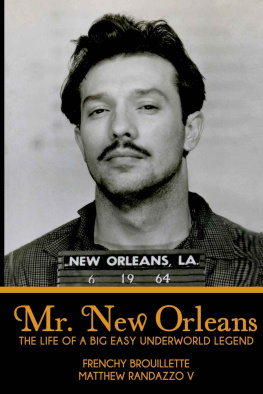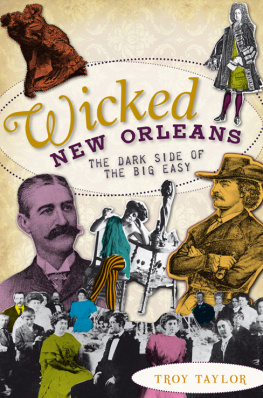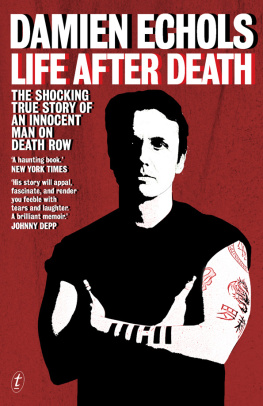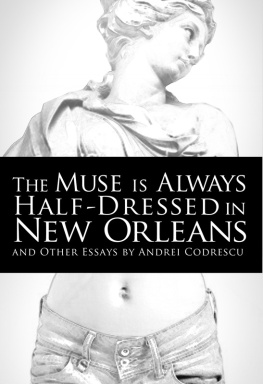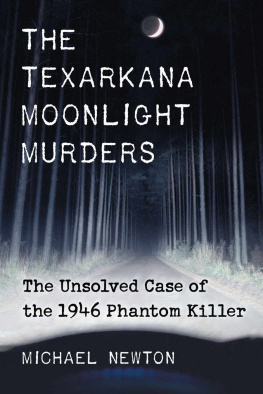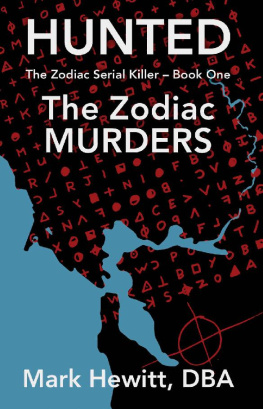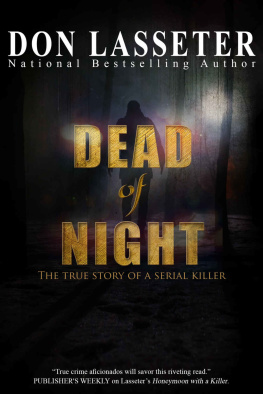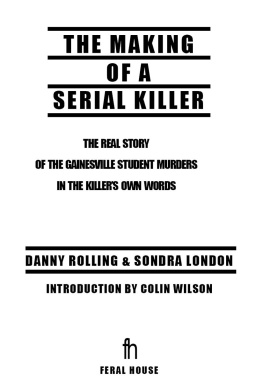Copyright 2017 by Miriam C. Davis
All rights reserved
Published by Chicago Review Press Incorporated
814 North Franklin Street
Chicago, Illinois 60610
Preface
O NE HOT SUMMER AFTERNOON about thirteen or so years ago, my brother Tim and I were sitting on my front porch drinking bracingly cold English cider. The conversation turned, as it always does on these occasions, to the subject of serial murder....
Tim told me about a case he had read about as a boy, about a killer who went around New Orleans whacking Jewish bakers with an axe. Ever since I read Ann Rules account of her erstwhile friend Ted Bundy, I have been fascinated, in a scared sort of way, with serial killers. I dont know what moved me to look into this further; I was deep into another topic at the time. Probably it was nothing more than the urge to procrastinate. But look into it I did, and found that the New Orleans case involved not Jewish bakers but Italian grocers. Eventually, I got hold of Robert Tallants Ready to Hang, which formed the basis of most other accounts of the Axeman. Robert Tallant was a New Orleans writer of the mid-twentieth century who, according to one reference librarian in the New Orleans public library, may well have gotten much of his information by hanging out in New Orleans bars.
In a chapter titled The Axman Wore Wings, Tallant tells the story: On the morning of May 24, 1918, Joseph and Catherine Maggio, Italian immigrants who ran a small grocery, were discovered dead and bloody in their bedroom. Theyd been assaulted with their own axe and had had their throats cut. Nothing appeared to have been stolen. The assailant had gotten in by cutting out a panel in the back door.
In the course of their investigation, police found a peculiar message written on the banquette (an old New Orleans term for sidewalk) near the Maggios home and grocery: Mrs. Maggio is going to sit up tonight just like Mrs. Toney. The police remembered that seven years earlier, in 1911, three other Italian grocers had been murdered with an axe; in two cases their wives had also been slain. Tallant gave the grocers names as Cruti, Rosetti, and Tony Schiambra. Was Tony Schiambras wife the Mrs. Toney of the sidewalk message? Tallant asked. Was this a message from the Italian Mafia? Had the couple been slaughtered by gangsters for some unknown misdemeanor? No one was ever charged with the murders, so these questions were never satisfactorily answered.
The next month Louis Besumer, a Polish grocer, and Harriet Lowe, the woman who lived with him, were also attacked with an axe and seriously injured. Again, the weapon had been the grocers own. Again, a door panel had been removed. And again, nothing was reported stolen. This time both victims survived, at least temporarily, and Lowe, who changed her story several times, accused Besumer first of being a German spy and later of having tried to kill her. When she died of her wounds two months later, Besumer was charged with murder.
Over the next fourteen months, the killer, nicknamed the Axeman by the press, racked up a litany of victims: Mrs. Edward Schneider, August, 5, 1918 (survived); Joseph Romano, August 10, 1918 (died); Charles, Rosie, and Mary Cortimiglia, March 10, 1919 (Mary died); Steve Boca, August 10, 1919 (survived); Sarah Laumann, September 3, 1919 (survived); and Mike Pepitone, October 27, 1919 (died). In almost all cases the modus operandi was the same: back door panel cut out, the victims own axe used, weapon abandoned at the scene, and nothing stolen. Most but not all of the victims were Italian grocers. Fear of the Axeman paralyzed the immigrant community. Some terrified Italians couldnt sleep at night without posting guards to stand watch. Phantom Axemen were seen everywhere. Stories circulated about grocers waking in the morning to find a door panel chiseled off and an axe outside their door.
Louis Besumer was acquitted of Harriet Lowes murder, but his was not the only trial. Rosie Cortimiglia accused two neighbors, elderly grocer Iorlando Jordano and his son Frank, of having attacked them and having killed their two-year-old daughter out of business rivalry. Even though her husband, Charles, testified that the killer had not been either man, father and son were convicted of murder and eighteen-year-old Frank was sentenced to death. Later, Rosie admitted that she had lied because she hated the Jordanos.
Shortly after the Cortimiglia attack, the New Orleans Times-Picayune received a letter purporting to be from the murderer. He was a fell demon from the hottest hell, the letter claimed, and would descend on New Orleans the coming Tuesday night looking for a victim, sparing anyone listening to jazz. Tallant reported that the designated evening, March 19, was Saint Josephs Night, and it was the loudest and most hilarious of any on record as jazz blared all over the city.
After the death of grocer Mike Pepitone in August 1919, the attacks finally stopped. And in Tallants account, the story seems to have had a dramaticand satisfactorysequel out in California: On December 7, 1920, Esther Pepitone, the widow of Mike Pepitone, shot and killed a New Orleans man named Joseph Mumfre in Los Angeles. She told the police that Mumfre was the Axeman, that she had seen him as he fled after murdering her husband. Convicted of his murder, Tallant wrote, she served only three years before being freed.
According to Ready to Hang, Joseph Mumfre was a career criminal who was well known to the New Orleans police. And the dates hed been in and out of prison matched the dates when the Axeman attacked and when he seemed to have disappeared.
So, was Mumfre the Axeman? Tallant said that the evidence was only circumstantial, and most New Orleanians believed that more than one killer was responsible. The two main theories were that the Mafia was responsible, or the killer was a homicidal maniac, a Doctor Jekyll and Mr. Hyde type as suggested by one of the investigating detectives.
This was the story that I found on the web and in crime anthologies when I first began researching the Axeman case. Most of the available sources basically repeated Tallants version of events.
While Tallant left the question of the Axemans identity open, I found that some writers seem to have swallowed whole the theory that Joseph Mumfre was the killer. In a list of male serial killers, for instance, forensic psychologist Eric Hickey listed Joseph Mumfre as the Axeman of New Orleans. In Bloodletters and Badmen, crime writer Jay Robert Nash argued that Mumfre was a professional killer who used an axe to kill Pepitone and other victims as part of a Mafia vendetta.
Others, however, questioned aspects of Tallants account. In an early edition of his Hunting Humans: The Encyclopedia of Serial Killers, vol. 1, crime writer Michael Newton reported that city records showed that no Italian grocers named Cruti, Rosetti, or Schiambra had been killedby an axe or anything elsein 1911.
I had an opportunity to check out some of these questions in the early 2000s soon after I became interested in the Axeman case. At the time, my husband and I visited New Orleans once or twice a year. On one of our visits, I popped out of the French Quarter to visit the city archives, located in the public library conveniently across Canal Street in the Central Business District. Examining homicide and coroners records for 1911, I discovered that while no Cruti, Rosetti, or Schiambra had been murdered that year, a sleeping Italian grocer named Joseph Davi had beenhis skull fractured and his wife cut up in the middle of the night. That such a basic fact about the case and one so easily discoverable had been missed suggested that the story had never really been properly investigated. Maybe, I thought, theres a book here.



